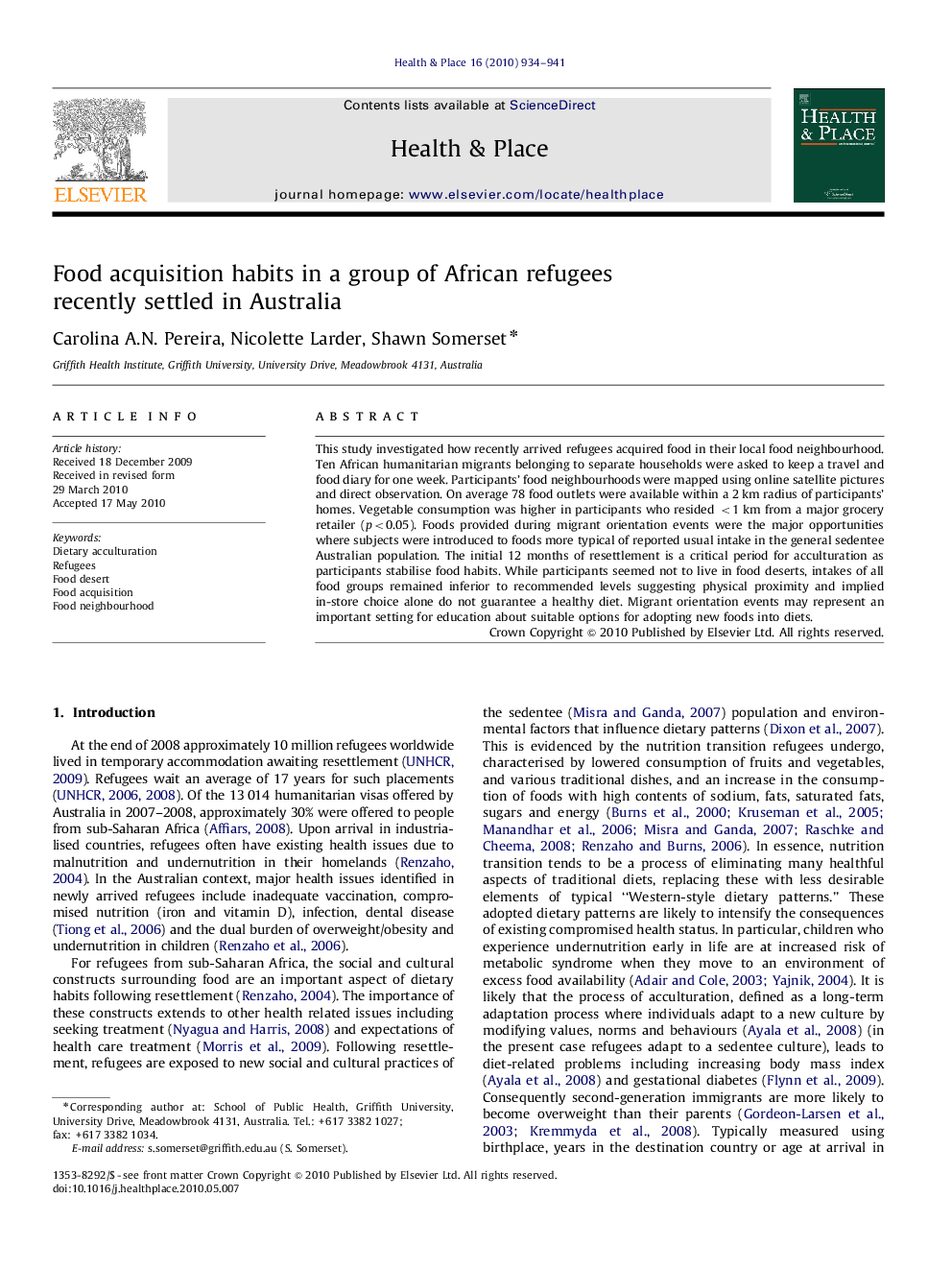| Article ID | Journal | Published Year | Pages | File Type |
|---|---|---|---|---|
| 10502744 | Health & Place | 2010 | 8 Pages |
Abstract
This study investigated how recently arrived refugees acquired food in their local food neighbourhood. Ten African humanitarian migrants belonging to separate households were asked to keep a travel and food diary for one week. Participants' food neighbourhoods were mapped using online satellite pictures and direct observation. On average 78 food outlets were available within a 2Â km radius of participants' homes. Vegetable consumption was higher in participants who resided <1Â km from a major grocery retailer (p<0.05). Foods provided during migrant orientation events were the major opportunities where subjects were introduced to foods more typical of reported usual intake in the general sedentee Australian population. The initial 12 months of resettlement is a critical period for acculturation as participants stabilise food habits. While participants seemed not to live in food deserts, intakes of all food groups remained inferior to recommended levels suggesting physical proximity and implied in-store choice alone do not guarantee a healthy diet. Migrant orientation events may represent an important setting for education about suitable options for adopting new foods into diets.
Related Topics
Health Sciences
Medicine and Dentistry
Public Health and Health Policy
Authors
Carolina A.N. Pereira, Nicolette Larder, Shawn Somerset,
